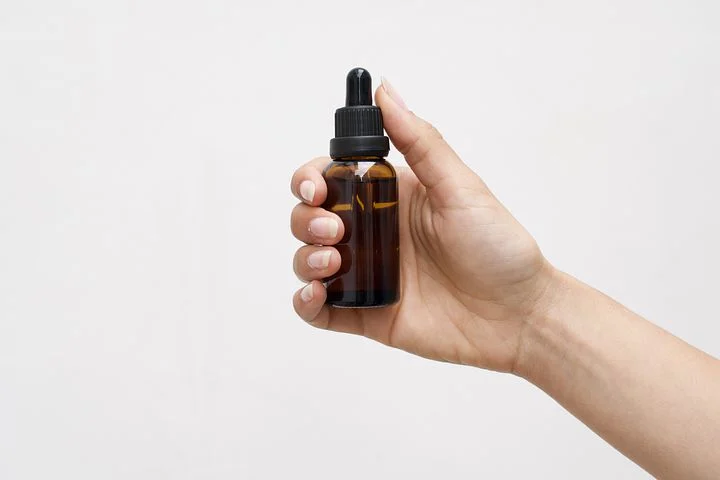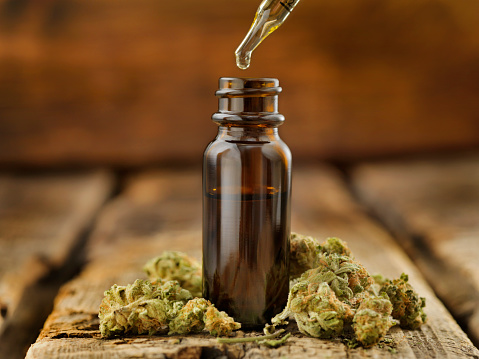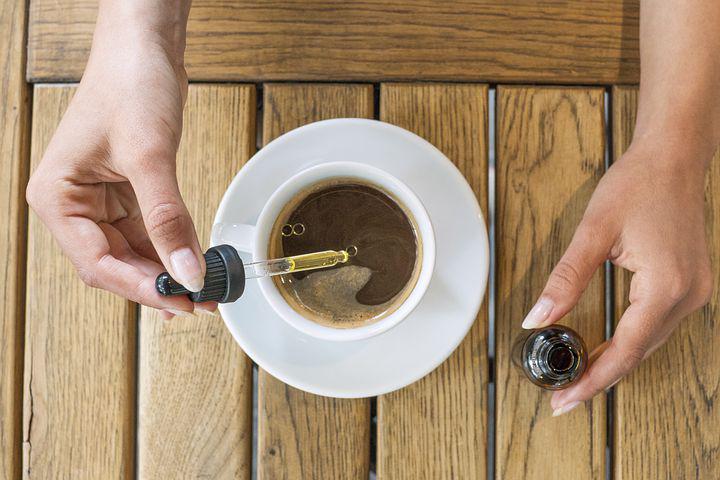Are you looking for cost-effective ways to make your homemade CBD oil without breaking the bank? Instead of buying costly CBD oils every month or in bulk, you can make your own batch of DIY products. By doing this, you can have full control over the ingredients and adjust the potency of the oil to match your needs.
Nowadays, cannabidiol has become one of the most popular and preferable forms of slaves. Due to its natural benefits, people came to use it for managing pain and inflammation. As a result, you can find CBD oil in various shapes and forms. However, one can also learn to prepare a healthy mix in their own home after learning some know-how.
While making your own CBD oil can be laborious and time-consuming, you can save a lot of money for a long-term regimen plan. You will also feel safe and confident about the all-natural ingredients present in the product. However, suppose you are suffering from severe health issues. In that case, we recommend using a product that is tested and certified by a lab and also potent enough to treat your symptoms visibly.

What is CBD-Infused Oil?
CBD oil is a refined hemp plant extract that has been incorporated into a carrier oil. The extraction process involves gently heating the cannabis and infusing it in carrier oil. The extraction method’s principle lies behind CBD and THC’s physicochemical characteristics. Both CBD and THC are hydrophobic and fat-soluble, implying that they are likely to interact with fatty acids, leaving behind other water-soluble components of the plant. Overall, adding carrier oil increases the bioavailability of cannabinoids in our system, and hence, they naturally promote better well-being.
Companies often use agents like coconut and olive oil to prepare an effective CBD oil mixture. Hence, you should get them when making your take on the formula. In a gist, they nourish the skin with topicals and give a pleasant taste to the edibles. Additionally, they both act as natural preservatives with antimicrobial and antifungal properties. Hence, they postpone the due date of your unique CBD salve. On this note, avoid using highly refined oils such as vegetable oil, soybean, corn, etc. Even if adding them seems like a good idea to replace some other element, the final result will disappoint you.
Note that coconut oil is more saturated with fats than olive oil; hence, it binds more quickly with cannabinoids. It is also solid at room temperature, meaning you can easily store it in gel cups for safe keeping. Organic coconut oil contains high content of MCT (medium-chain triglycerides), which is an exponential binding agent.
What Are The Different Kinds Of Weed Infused Oil?
CBD-infused oil can be made with both high CBD hemp flowers and marijuana strain. So, check the laws in your country to find out which options are available to you. Purchasing hemp flowers from online stores is recommended to make a legal CBD product. With that said, the DIY CBD oil will be a full-spectrum CBD product. As such, it will comprise more or less all of the cannabinoids and trace elements present in hemp.
Hemp plant strains contain a much higher content of CBD than marijuana. Thus, the hemp seed oil will solely consist of CBD (or a trace amount of THC). On the other hand, marijuana-infused oils always combine both THC and CBD. Naturally, the ratio depends on the type of strain of the marijuana plant. This impacts the potency of the oil as well. You can also research about full spectrum vs broad spectrum cbd oil to know more.
Furthermore, THC has psychoactive properties, while CBD does not. Also, THC is fast-acting when dealing with pain and lowering high levels of stress. Therefore, CBD is less potent in that regard. This means that a topical or edible featuring both THC and CBD has the potential to produce an entourage effect synergistically. This combined effect is stronger and more powerful than any single ingredient on its own. Moreover, you want to include extracts derived from the entire plant, not just the stalks. In general, the seeds and stalks only contain minute amounts of cannabinoids; therefore are not suitable for making a potent end product.
Therapeutic CBD and THC Ratios
We should note that CBD and THC, the two most essential cannabinoids, have unique therapeutic properties. So, mixing various strengths or ratios will allow you to fine-tune the outcome. Instead of measuring CBD doses in terms of milligrams, ratios have become more important nowadays. Each ratio is associated with different types of health conditions, although studies are still in progress to prove such claims. As a result, note that science has a lot of ground still to cover. In other words, there is no perfect CBD/THC ratio that works for everyone. Yet, equal proportions of CBD and THC have been shown to offer the most medicinal benefits. Such mixtures induce symptomatic relief in cancer, insomnia, autism, and neurological disorders like fibromyalgia and multiple sclerosis.
However, theoretically, the different ratios of CBD and THC work together to treat a variety of ailments, as shown in this table:
| CBD | THC | USES |
| ✓ | ✓ | Anti-inflammatory + Antioxidant properties |
| ✓ | ✓ | Muscle relaxing effects |
| ✓ | Induce drowsiness | |
| ✓ | Improves circulatory system | |
| ✓ | Appetite stimulation | |
| ✓ | Decreases anxiety and seizures | |
| ✓ | ✓ | Neuroprotective properties |
| ✓ | ✓ | Anti-tumor properties |
| ✓ | ✓ | Treat Crohn’s disease |
| ✓ | ✓ | Analgesic effects |
| ✓ | ✓ | Relieves depression |
| ✓ | ✓ | Reduces muscle spasms |
| ✓ | Treats Diabetes | |
| ✓ | Treats Rheumatoid Arthritis | |
| ✓ | Treats Psoriasis |
Why Learn to Make Your Own CBD Oil at Home?
Cannabis oil has shown to have soothing and relaxing properties while also reducing acne, wrinkles, puffiness, redness, and irritation in the skin. THC and CBD have profound analgesic effects besides having anti-inflammatory and antioxidant properties. Hence, you can apply any homemade cannabis salve or topical oil on sprained ankles, back pain, aching joints, muscles, etc.
Making homemade CBD oil, ointment and salve is a healthy way to consume cannabis-infused products. However, you’ll need the proper know-how to measure the extraction procedure. In that way, you’ll have an easier time figuring out the exact strength or potency of your CBD/THC combination. Therefore, it is recommended to exercise great caution and work only with small doses at the start.
As mentioned before, Cannabinoids are fat-soluble, implying they can be readily digested in our bodies when consumed as oils. Simply chopping the hemp or weed plant material and adding it to your food recipe will not produce noteworthy results. This is why, instead of adding raw cannabis to your food, decarboxylated cannabis is utilized further to increase the effectiveness and consistency of CBD oil.
Using Decarboxylated CBD for Oil
The first step to making cannabis more potent and psychoactive is to convert it into its decarboxylated form. The natural raw form of cannabis contains the two most common cannabinoids: THCA (tetrahydrocannabinolic acid) and CBDA (cannabidiolic acid). Both of them are present in acid form and deliver substandard results. Therefore, decarboxylation is necessary to remove the acid and activate the cannabinoids. The process involves slow and gentle heating to convert the raw cannabinoids into active THC and CBD agents.
The heating, however, must be gentle to prevent ruining the extracts. Overheating or underheating cannabis destroys its natural effects. So, there are precise time and temperature points where CBDA and THCA actively convert into active forms. Note that CBD takes twice as much temperature to activate as THC.
The cannabis decarboxylation process for homemade recipes can be done in an oven and by adding extract into the oil. Then, use slow heating to avoid further decarboxylation.
So, to make this two-step process less time-consuming, some people simultaneously decarb cannabis and infuse the oil on a stove. However, this method requires critical monitoring to make sure not to miss the time to temperature spot for decarboxylation or activation.
A decarboxylator, also known as a precision cooker, is used to perform this task properly. A precision cooker maintains optimal conditions for activating cannabinoids without destroying the terpenes and other phytonutrients. If you are a regular CBD oil maker, this one will be a worthwhile investment.
Supplies Needed
While the supplies vary regarding which method you settle on, a few specific supplies are necessary for almost all CBD oil recipes. You don’t need fancy, advanced tools in your kitchen; some basic equipment will be sufficient for it. The method we are sharing will need the following:
- One cup of decarboxylated cannabis (approximately 7 to 10 grams)
- One cup of coconut oil (or olive oil to maintain the liquid form of salve)
- A mesh strainer
- A glass bowl
- Storage container with a lid
- A probe thermometer
- A cheesecloth
- A double boiler or makeshift boiler
- Optional: a few grams of raw cannabis (to produce a full spectrum product containing raw THCA and CBDA products as well)
How To Make Homemade CBD Oil?

The first step in making CBD oil at home is to decide whether you want to use alcohol or carrier oil for your extraction.
In the alcohol extraction method, you have to soak the hemp in the alcohol to strip all the beneficial compounds out of it. The most common solvents used are ethanol, rice alcohol, butane, and isopropyl alcohol. However, ethanol, or drinking alcohol, requires proper handling due to high flammability and possible risk of fumes and explosions. Not only that, too much alcohol destroys all the therapeutic terpenes and phytonutrients carrying multiple medical benefits. Also, it is time-consuming and requires a ton of patience to let the hemp plant sink in alcohol to gain potency gradually over time. Hence, the alcohol extraction method is generally preferred for preparing CBD tincture.
This is why we have stuck to the carrier oil method to prepare CBD oil in this guide. Comparatively, the oil-based extraction method is the simplest and safest method and offers healthy amounts of omega fatty acids in the carrier oil.
One critical aspect of making homemade cannabis oil is to monitor slow and gentle heating to avoid ruining the batch. The ideal temperature to infuse cannabis into oil is around 120 to 180 F. Anywhere above 200 degrees will ruin the cannabis extract. In fact, people have tried to skip the heating step altogether and allow the decarbed cannabis to bind with the oil at room temperature for several weeks. In such scenarios, lower temperatures will help preserve the active cannabinoids and terpenes.
Here, we recommend making use of a double boiler (with the right temperature settings). Directly heating the oil in a cooking pot will create hot spots, thereby destroying the cannabinoids. Also, disperse a probe thermometer into the boiler to monitor the temperature changes. Generally, oil has a higher boiling point, meaning the water will start to bubble far sooner than oil. For example, even over 200 degrees F, you’ll still have to wait for the oil to start boiling.
One special method for professional CBD oil extraction, which all experts and reputable brands, is the CO2 extraction method. The CBD extract yielded via the CO2 extraction method is the purest and safest out of all extracts possible today.
It is free from harmful residual solvents and trace impurities while containing all the beneficial cannabinoids, terpenes, and phytonutrients present in the hemp plant. However, it requires highly specialized and expensive equipment and scientific expertise to perform correctly. Due to that, you can not use this method in your home.
Instructions
- First, you have to make the cannabis decarboxylated. Grind or section into small pieces until it has a fine consistency. You can also mince it in a grinder, and it naturally breaks into pieces if the plant is dried properly. Next, spread the grind on top of a baking pan already covered with parchment paper. Some folks cover the top of the tray with parchment paper to trap the volatile terpenes or cannabinoids that get evaporated during the process. Put in the oven at 250 F for 20 to 30 minutes. This setting is a sweet spot temperature for high THC strains. For high CBD content, heat it longer for about 50 to 60 minutes but at the same temperature setting. Note that this process will create a strong smell of weed around your house that will linger for a while.
- When the time is up, gently take out the tray and let the mixture cool down. You can observe the plant’s color change from green to light brown. Now, set up the double boiler on a gentle heat. Add coconut oil to the top section and water to the double boiler’s base section. Heat it steadily until the solid coconut oil turns liquid.
- Next, slowly diffuse the decarboxylated cannabis into the melted coconut oil. You can also add a few grams of raw cannabis at this step.
- Gently allow cannabis-infused oil to simmer in low heat for about 30 to 60 minutes with constant stirring. The goal is to maintain the boiler temperature between 130 to 150 F for one hour. Use a probe thermometer to monitor the temperature repeatedly to ensure it does not exceed 200 F.
- Afterward, position a strainer with cheesecloth over the glass bowl. Now, pour the cannabis-infused oil mixture through this. After straining, squeeze out the residue oil in the cheesecloth. You might want to use gloves to proceed as the oil will be hot at this point.
- Transfer the strained mixture into a storage container enclosed with a tightly fitted lid. Always store it in a dark place away from light or inside the refrigerator. You can store it in a dropper bottle if you have one available. In general, using a dropper is the most convenient method and allows for precise ratios. After that, your homemade CBD oil is ready to use. Also, note CBD edibles made from carrier oils have a shorter shelf life. So, avoid making huge batches and use them within six months or a year. In general, you can use it as long as it doesn’t catch mold.
How To Use CBD Oil?
- You can add homemade cannabis oil to your body care routine. It will help you treat joint and muscle pain, psoriasis, eczema, redness or inflammation, and even prevent cancer growth and multiplication.
- Add a small amount of CBD oil to any beverage or tea of your choice (e.g., chai, latte, smoothies, etc.). Conversely, CBD oil will not be as much soluble in drinks as in foods due to its chemical nature. Some people like to mix a few drops into a bowl of yogurt or a cup of coffee. Also, you can add a little bit of honey to remove the bitter taste. Similarly, you can add flavoring agents such as mint, vanilla, or citrus extract for a sweeter drink. On the other hand, skip the flavorings if you plan to take the oil with a meal. However, keep in mind that the FDA has disapproved of the idea of adding cannabis-derived products into food or drinks. Hence, the FDA only labels the edible forms which are prescribed by licensed physicians.
- You can apply the oil directly on the skin, like a lotion or ointment, to treat various skin health issues. You can apply the oil at night and scrub it off in the morning to hide the green tinge of cannabis visible on the skin. Some skin cancer patients apply DIY CBD oil to their skin using bandages. In that way, they treat certain forms of skin cancer.
- You can also consume a small dose of pure oil. Pour a few oil drops under the tongue, preferably using a dropper, and wait until it dissolves. Sublingual administration of CBD is more effective and far more fast-acting. This is due to it directly entering your bloodstream via the sublingual artery.
- Mix the cannabis-infused oil into your regular meals or any other CBD edible recipes. Likewise, you can make chocolates, cookies, pasta, and frosting recipes. If you dislike the taste, you can also spread it on a piece of toast or take it with fruit. You can also mix it with a favorite drink to improve its taste.
- You can also make use of a spray bottle and fill it with CBD oil. For optimal results, spray it two to three times a day into your mouth. Nowadays, this method is the least popular of all.
- Lastly, you can also use the good old vape pen to vaporize the CBD oil. Vaping is a fancy choice that also allows you to ingest CBD on the go.
Homemade Cannabis Oil Potency: Proceed With Caution
It is very difficult to estimate the exact potency of homemade cannabis products. For example, you can’t calculate the exact amount of CBD or THC content just by the size of the bud or plant you used in the process. In other words, the percentage of cannabidiol present in your homemade oil depends on several factors. Aspects like the percentage of CBD in the raw plant, the heating method, the distillation, and so on are all part of the equation.
The potency can only be determined by laboratory testing, which is costly and often unavailable to most people. Even if you purchase a strain that claims a particular strength or ratio of CBD and THC, you might not get a clear answer. Homegrown plants show variations because of how they were grown, dried, harvested, or stored.
The potency of the end product also depends on the method and the handling of the mixture. Other factors include the duration of the decarboxylation process, the infusion, the age of the edible, and its storage. As such, these factors contribute to the total ratio of CBD and THC content present in the mix. Both CBD and THC decline over time with enough light exposure and heat, making them less effective. Usually, the potency also decreases with time as THC naturally degrades into CBN.
Dosing Homemade Cannabis Oil & Edibles
As a rule of thumb, always take the CBD edibles in smaller doses and increase gradually as you build tolerance. Your body will adjust to the level of CBD you’re consuming, and you can slowly increase your dosage to find the optimal amount for you. You can also apply your math skills in an edible recipe to get the perfect mix of CBD extract and carrier oil. For example, we need about half a cup of coconut oil to make this chocolate recipe. There are 24 teaspoons in half a cup, meaning 48 doses worth of CBD oil in a single batch of this chocolate. The number of doses will also depend on the size of the mold you use.
You can also experiment with different strains of natural plant oils and products to figure out what works best for your taste buds. You don’t want to build up a tolerance to cannabis, which can lead to cannabis cravings and can also affect your memory and ability to focus.
The Effects of CBD in Edibles Versus Smoking or Vaporizing
In general, it takes far longer to get the full effect of cannabis when you consume it as an edible than by vaporizing or smoking it. In an edible form, it goes through the digestive system before paring with the nerves. So, it can take about one to three hours for you to feel any effects.
However, vaping is the fastest way to get CBD in your bloodstream. Unlike with edibles, it usually takes around ten to fifteen minutes for people to feel the effects kick in. Then, it instantly crosses directly to the blood when consumed via the lungs. Furthermore, the effects of edibles are far more high-inducing and disorienting than all other forms. Vape cartridges may contain alcohol, for example, propylene glycol, which can break down into formaldehyde, a potential carcinogen.
The worst mistake you can make is to get impatient and take another dose right after the first one. Consequently, it can cause rapid heartbeat, nausea, or vomiting if you are not careful.
Not only do the edibles take longer to kick in, but they also linger in your body for quite a while. It is reported that ingested CBD can last up to 12 hours in your body. Moreover, the effects produced by cannabis edibles are much more intense than those of smoking or vaping.

Conclusion: How To Make CBD Oil?
We have listed all the steps, equipment, dosing calculations, and methods to help you start cooking CBD oil today. Therefore, you can follow this guide and hone your skills by starting out slow. However, other approaches are worth trying as well. So, stick to the one method which feels simpler and less hustling for you to prepare. Either way, these recipes allow you full control voe what goes in the final product. Hence, you can rest easy knowing that your CBD oil is 100% natural and free from synthetics.
You can always prepare your monthly batch of CBD oil in the comfort of your home, but purchasing CBD from a reputable CBD brand is still advised. Professionally extracted CBD oil is made with precise calculation prior to rigorous testing periods. In that way, brands ensure maximum efficacy, potency, and safety. So, if you want to treat some serious health issues, it’s best if you buy a potent CBD oil from a well-known, third-party certified CBD brand.





